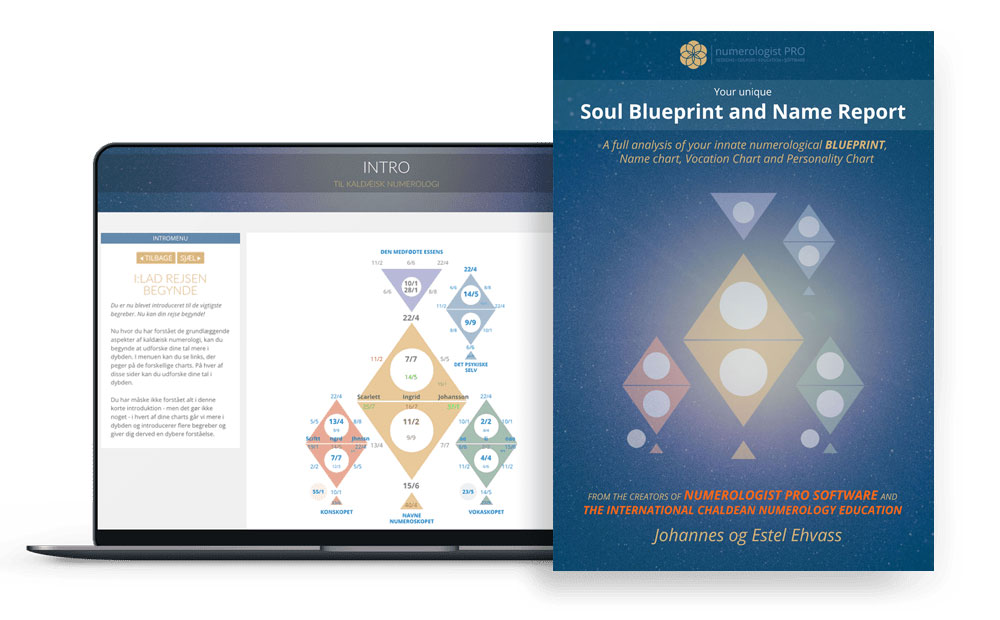Persian Astrology

Johannes Ehvass
Welcome, dear reader! Together, we embark on a captivating journey into astrology, a timeless art and science that has accompanied humanity since its earliest days. Each astrological discovery not only mirrors the era and culture it emerged from but also feels like a celestial gift, as if the universe is directly speaking to us. Through these articles, I share with you the profound journey of how astrology has grown and evolved alongside us. Let's explore this cosmic connection that has, for millennia, enriched our understanding of ourselves and the universe around us.
Achaemenid and Parthian Astrology: Confluence of Celestial Currents

When discussing the evolution of astrology, one cannot overlook the contributions of the Persian empires.
The Achaemenid and Parthian periods represent two significant epochs that witnessed the blending of astrological traditions, most notably those of Mesopotamia and Hellenistic Greece, with indigenous Persian thought.
This amalgamation, rich and varied, formed the bedrock for Sassanian astrology that would later come to influence Islamic and Medieval European astrological traditions.
The Achaemenid Period (550–330 BCE): Beginnings and Borrowings
Founded by Cyrus the Great, the Achaemenid Empire is often remembered as one of the largest empires in history. As they expanded their territories, they absorbed the cultures, beliefs, and sciences of the conquered lands. Given that their domain at its zenith included Mesopotamia, it’s no surprise that Mesopotamian astrological practices found eager patrons among the Persians.
Mesopotamian Legacy: As previously mentioned, Babylonian and Chaldean astrological practices had a profound system based on omen interpretation, with celestial events, particularly lunar phenomena and planetary movements, regarded as portents. The Achaemenids, with their vast administrative machinery, likely saw the value in these practices for governance, often consulting astrologers for auspicious dates and omens.
Zoroastrian Influence: The spiritual and religious framework of the Achaemenid Persians was largely shaped by Zoroastrianism, founded by the prophet Zoroaster. While the religious texts, particularly the Avesta, don’t delve deep into astrology, the dualistic nature of Zoroastrian cosmology – the eternal battle between Ahura Mazda (the Supreme deity) and Angra Mainyu (the evil spirit) – finds echoes in astrological interpretations, with celestial phenomena seen as manifestations of this cosmic duel.
Parthian Period (247 BCE – 224 CE): Bridging East and West

The Parthian Empire, while not as vast as the Achaemenid, played a crucial role in the Silk Road’s establishment, ensuring a vibrant cultural and intellectual exchange between the East and the West.
Hellenistic Interactions: The Seleucid Empire, which preceded the Parthian, had strong Hellenistic influences. Even as the Parthians overthrew the Seleucids, they inherited this Hellenistic legacy. Astrologically, this meant the blending of the horoscopic practices of the Greeks with the omen-based traditions of the Mesopotamians and the spiritual nuances of Zoroastrian thought.
Silk Road Syncretism: The Silk Road wasn’t just a commercial highway; it was a conduit for ideas. As traders, scholars, and travelers moved from China to the Mediterranean, they brought with them beliefs, practices, and knowledge. While it’s challenging to pinpoint specific astrological ideas that traveled this route, it’s undeniable that the Silk Road facilitated a syncretic environment, where ideas from distant lands could be discussed, debated, and integrated.
Astrology as Statecraft: The Parthian administrative system was feudal in nature, with local satraps (governors) enjoying considerable autonomy. In such a system, maintaining power dynamics required tact, strategy, and, often, a divine mandate. Astrologers, with their ability to interpret celestial signs, played a pivotal role in legitimizing the rule of kings and local chieftains, predicting auspicious times for battles, and making sense of natural calamities.
Legacy of the Achaemenid and Parthian Astrology

While distinct in their contributions, both the Achaemenid and Parthian periods laid the foundation for what would become a uniquely Persian astrological tradition during the Sassanian period.
Formation of a Persian Zodiac: Borrowing from Mesopotamian and Hellenistic traditions, a zodiac system began to take shape, integrating indigenous Persian symbols and myths.
Astrological Literature: The blending of traditions required codification, leading to the creation of texts and manuals that detailed astrological practices, interpretations, and calculations. Though many of these are lost to history, references in later works provide glimpses into their content.
Rise of the Astrologer-Priest: Given the spiritual undertones of Persian astrology, the role of the astrologer and the priest began to merge. These astrologer-priests, well-versed in Zoroastrian cosmology, religious rites, and astrological calculations, occupied influential positions in both religious and royal courts.
Conclusion
The Achaemenid and Parthian periods represent a fascinating era of convergence. As empires that were constantly in flux, absorbing and integrating a mosaic of cultural, spiritual, and scientific influences, their contribution to astrology is a testament to their cosmopolitan ethos. They took the celestial wisdom of the lands they interacted with, be it through conquest or trade, and wove it into a tapestry that was uniquely Persian, setting the stage for the golden age of Sassanian astrology.

Johannes & Estel: Renowned authorities in Numerology, Astrology, and the esoteric arts. As the founders of Scandinavia's premier Numerology school, we're delighted to share our insights through this curated series on astrology. Dive in and discover the stars.
The Worlds Most Advanced Numerology Report

Your birthdate reveals your unique life purpose, potentials, talents, weaknesses, and karma in this life.
Your names show what you attract into your life regarding your career, relationships, happiness, money, and success.
GET THE REPORT HERE
Introduction to Astrology
The history of Astrology
Moving beyond deterministic astrology
Foundation of Astrology: Planets, Signs and Houses
Astrology and the Holographic Universe
The Holographic Universe
The Human Psyche as a Mirror to The Solar System
The Human Body as a Mirror to The Star Signs
Astrology Background
Egyptian Astrology
Mayan Astrology
Chinese Astrology
Indian Astrology - Jyotish
Celtic Astrology
Tibetan Astrology
Mesopotamian Astrology
Early Mesopotamian Astrology: The Dawn of Celestial Divination
Enuma Anu Enlil: The Epicenter of Babylonian Celestial Omen Interpretation
Babylonian and Chaldean Astrology
Babylonian and Chaldean Astrology
Chaldean influence and evolution
Chaldean Wisdom: Safeguarding and Transmitting Astrological Knowledge
Hellenistic Astrology
Hellenistic Astrology background
Claudius Ptolemy and Tetrabiblos
Vettius Valens
Dorotheus of Sidon
Persian Astrology
Persian Astrology background
Sassanian Astrology
Late Antiquity and The Transition Period
Late Antiquity and The Transition Period
Hellenistic to Islamic Transition: The Torchbearers of Astrological Wisdom
Islamic Golden Age
Arabian Astrology Background
Arabian Astrology Contributions
Medieval Astrology
Introduction: The Medieval Cosmos
Monastic Preservers: Astrological Knowledge in the Dark Ages
Astrology in Medieval Medicine
Kings, Queens, and Constellations: Astrology in the Medieval Court
The Church and the Stars: A Contentious Relationship
Universities and Scholastic Pursuits: Academic Astrology
Astronomy & Astrology: Tools of the Trade
Medieval Astrological Houses and the Synthesis of Traditions
Transition to the Renaissance: Humanism and the Celestial Arts
Reflections: Medieval Astrology's Echoes in Modern Practice
Astrological Art of the Middle Ages
Famous Medieval Astrologers
Medieval Astrological Texts
Renaissance Astrology
Renaissance Humanism and Astrology
Scientific Advancements and Astrology
The Social Fabric: Astrology in Everyday Renaissance Life
Court Astrologers of the Renaissance
Controversies and Conflicts: Astrology Under Scrutiny
Renaissance Texts and Authors: Continuation of a Tradition
Astrology and Art: Celestial Imagery in the Renaissance
Renaissance Astrological Practices: Evolutions and Innovations
End of the Renaissance: The Gradual Decline of Astrological Influence
Renaissance Astrology's Echo in the Modern World
Enlightenment Astrology
Introduction: The Enlightenment and Astrology
Challenging the Stars: Astrology's Critics during the Enlightenment
Astrology and the New World
Astrology in the 19th Century
The Dawn of Psychological Astrology
Astrology in the 20th Century: A Modern Renaissance
Astrological Associations and Schools
Modern Controversies and Astrology
Astrology and Popular Culture
Astrology and Technology
Current Trends and Future Directions in Astrology
Conclusion: Reflecting on Astrology's Evolution
The Planet Significances
The Sun in Astrology
The Moon in Astrology
Mercury in Astrology
Venus in Astrology
Mars in Astrology
Jupiter in Astrology
Saturn in Astrology
Uranus in Astrology
Neptune in Astrology
Pluto in Astrology
Chiron in Astrology
Black Moon Lilith in Astrology
Pars Fortuna in Astrology
Ceres in Astrology
Houses in Astrology
Introduction to Astrological Houses
The Angular Houses
The Succedent Houses
The Cadent Houses
The 1st House
The 2nd House
The 3rd House
The 4th House
The 5th House
The 6th House
The 7th House
The 8th House
The 9th House
The 10th House
The 11th House
The 12th House
Interaction Between Houses
Derived Houses, House Rulers, and Interceptions
Conclusion: Synthesizing House Knowledge
All Materials © 2023 & 2024 Numerologist PRO
Terms of Service: Information provided by Numerologist PRO and/or from this web site is not intended as advice (medical, psychological, financial or other), nor is it intended to replace your work with a qualified professional (medical or otherwise). You should maintain your relationship with your providers and consider the services of this site as informational only. Any information, stories, examples, or testimonials presented on this website do not constitute a warranty, guarantee, or prediction regarding the outcome of an individual. This web site is a sharing of knowledge and information of numerology/energy work based on the experiences of Numerologist PRO. You are encouraged to make your own decisions based on your own research and inner guidance. By booking and receiving services, you agree to fully release and hold harmless Numerologist PRO and all it's affiliated numerologists from and against any liability or claim that may arise out of or in connection with their service(s).
Numerologist PRO © 2021

CONTACT
numerologist@numerologistpro.com
LIKE US, and get free numerology tools, info about your personal numbers, best business dates of the year - and more!
YOUR FREE NUMEROSCOPE CHART
Enter your name and email below and get access to our free online numerology chart tool.